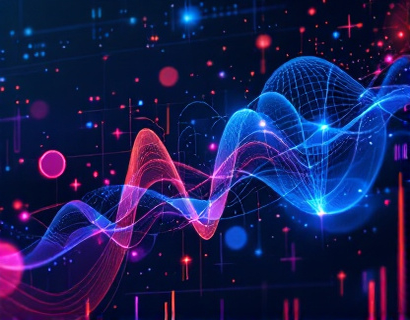Streamlining Professional Communication: Mastering Time-Smart and Block Time-Based Notifications for Enhanced Productivity
In today's fast-paced work environment, efficient communication and organization are crucial for success. A sophisticated multi-platform notification system can significantly enhance productivity by ensuring that professionals and organizations stay informed and organized. This system delivers timely alerts through universal and block time-based schedules, adapting to various workflows and schedules. By implementing such a solution, individuals and teams can reduce missed updates and boost overall efficiency.
The challenge in modern communication lies in the sheer volume of notifications and messages that professionals receive daily. Emails, messages, alerts, and updates from various platforms can easily overwhelm even the most organized individuals. A well-designed notification system addresses this issue by providing a structured approach to managing these alerts. It ensures that critical information is delivered at the right time, without causing disruption or distraction.
Understanding Universal Time-Based Notifications
Universal time-based notifications are designed to deliver alerts at specific times, regardless of the user's current schedule or time zone. This feature is particularly useful for teams operating across different time zones or for individuals who work in environments with variable schedules. By setting a universal time, users can ensure that they receive important updates at consistent intervals, enhancing predictability and planning.
For example, a project manager can set a universal notification to receive daily progress reports at 9 AM UTC, ensuring that they are always up-to-date with the latest developments, no matter where team members are located. This approach simplifies time management and reduces the need for constant checking of multiple platforms.
Benefits of Block Time-Based Notifications
In contrast, block time-based notifications allow users to define specific time blocks during which they receive notifications. This feature is ideal for those who prefer to manage their communication in designated periods, helping to minimize interruptions and maintain focus on tasks. By controlling when notifications are received, professionals can create a more balanced work environment.
For instance, a software developer might set block time notifications from 10 AM to 12 PM and 2 PM to 4 PM, allowing them to concentrate on coding during the intervening hours. This method not only enhances productivity but also reduces stress by providing clear boundaries between work and focused work periods.
Adapting to Various Schedules
One of the key advantages of a sophisticated notification system is its ability to adapt to diverse schedules and work patterns. Whether you are a morning person or prefer working late into the night, the system can be tailored to fit your unique rhythm. This flexibility ensures that notifications are received at the most convenient times, maximizing their effectiveness.
For organizations, this adaptability is crucial for maintaining cohesive communication across different departments and shifts. A hospital, for example, can set notifications for nurse shifts, ensuring that critical updates are received during each nurse's active hours, regardless of the time of day.
Enhancing Workflow Optimization
The integration of time-smart and block time-based notifications directly contributes to workflow optimization. By reducing the cognitive load associated with managing multiple notifications, professionals can focus more on their core tasks. This leads to increased efficiency and higher quality output.
Moreover, these notification systems can be integrated with various platforms and tools, such as project management software, messaging apps, and email services. This seamless integration ensures that all relevant information is centralized and easily accessible, further streamlining workflows.
Reducing Missed Updates
Missed notifications are a common pain point in professional communication. A reliable notification system minimizes this risk by ensuring that alerts are delivered promptly and consistently. Whether it's a critical update in a project management tool or an important message from a client, users can trust that they will not miss essential information.
This reliability is particularly important in high-stakes environments such as finance, healthcare, and emergency services, where timely communication can have significant consequences. By implementing a robust notification system, organizations can enhance their reputation for reliability and professionalism.
Customization and Flexibility
A key feature of advanced notification systems is their customization options. Users can tailor notifications to suit their specific needs, setting preferences for alert types, frequency, and delivery methods. This level of control ensures that the notification system complements individual work styles and organizational cultures.
For example, a marketing team might prefer to receive block notifications for campaign updates during business hours, while a research team might opt for universal notifications to stay informed about new data releases at any time. This flexibility makes the system versatile and applicable to a wide range of professional settings.
Improving Team Collaboration
Effective communication is the backbone of successful team collaboration. A sophisticated notification system fosters better collaboration by ensuring that all team members are informed and aligned. By receiving timely updates, team members can respond promptly and coordinate their efforts more effectively.
Additionally, these systems often include features such as group notifications and shared calendars, which further enhance collaboration. For instance, a remote team can use group notifications to keep everyone informed about project milestones and deadlines, reducing the need for constant check-ins and meetings.
Enhancing User Experience
The user experience is a critical aspect of any notification system. A well-designed system should be intuitive and user-friendly, requiring minimal setup and configuration. This ease of use encourages adoption and ensures that users consistently benefit from the system's features.
Moreover, the system should provide clear and concise notifications, avoiding unnecessary information that could lead to notification fatigue. By focusing on relevant and actionable alerts, professionals can maintain their attention and productivity.
Integration with Existing Tools
Seamless integration with existing tools and platforms is essential for a notification system to be truly effective. Compatibility with popular software such as Slack, Microsoft Teams, Asana, and Trello ensures that users can manage all their communication and task management needs from a single interface.
This integration not only simplifies the user experience but also enhances productivity by reducing the time spent switching between different applications. For example, a user can receive a notification in Slack that automatically updates their Asana task, streamlining the workflow and minimizing manual input.
Scalability for Growing Organizations
As organizations grow, their communication needs become more complex. A scalable notification system can accommodate increasing numbers of users and notifications without compromising performance. This scalability ensures that the system remains effective and efficient, even as the organization expands.
For instance, a startup that grows into a large enterprise can continue to use the same notification system, benefiting from its robust features and ease of management. This continuity is invaluable for maintaining consistency in communication and workflow processes.
Conclusion
In conclusion, a sophisticated multi-platform notification system that offers both universal time-based and block time-based notifications is an invaluable tool for professionals and organizations seeking to enhance productivity and streamline communication. By providing timely, relevant, and customizable alerts, such a system helps individuals and teams stay organized, focused, and efficient in today's fast-paced work environment. Embracing this technology can lead to significant improvements in workflow, collaboration, and overall performance.










































